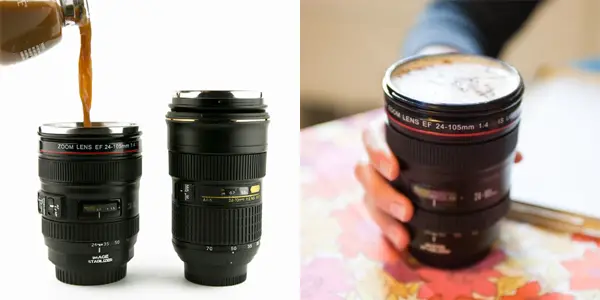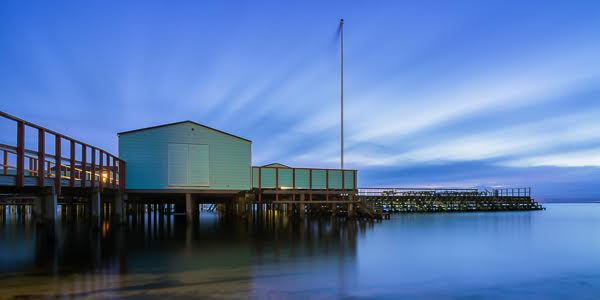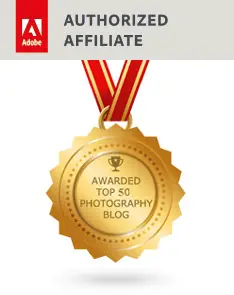Still life photography is the photography of inanimate objects purposefully arranged and lit. There’s something very satisfying about capturing something exactly as you pictured it in your mind. The items themselves, their arrangement, lighting, and camera settings are all meticulously controlled to produce the desired result. Still life photography is arguably the most technical of the photographic disciplines. Because the scene, the lighting, and the camera are all under your control, it is good training for becoming proficient both technically (camera control) and artistically (composition and lighting).
admin
John Watson is the original founder of Photodoto. If you're interested in what John has been up to, you can browse his personal blog.
Quick tip: Flare control
When you’re shooting towards a bright light source, like the sun, light may hit the lens directly. When that happens, flare will inevitably appear in your photos. Flare introduces strange reflections and robs contrast from your images. Lens hoods control flare by shading the lens.

Flare from sunlight hitting the lens
But if you don’t have a hood or it isn’t working at the angle you need, use your hand. Raise your left hand to block the light source and shade your lens. You may have to hold your hand at arms length to get it out of the frame. On SLRs and DSLRs you can see the flare in the viewfinder so you’ll know when you’ve got it right. On point and shoots you can see the effect in the LCD.

Flare removed by shading the lens with my left hand. (This image is darker because I also changed the exposure between shots.)
A visit to the county fair
There’s something fascinating about a county fair. I’d never been much of a fan of the whole concept until after I’d gotten hooked on photography. And then, one Summer, I went to the fair and brought my camera along. Maybe it was because photography had taught me how to see again. How to see the wonder and grotesquerie that abounds at a county fair. There are more photo opportunities per square meter than almost anyplace I can think of.
Converting color images to black and white
But black and white images can be very powerful. By eliminating color, black and white forces us to concentrate on other aspects of the photo. Textures. Lines. Something as simple as a surface receding into shadow becomes positively sensuous when care is taken in the conversion process. There are many techniques for converting a color image to black and white. The only consensus seems to be that simply converting to grayscale is the wrong way to do it.
… Continue reading Converting color images to black and white
Review: Nikkor 18-200 G f/3.5-5.6 ED-IF AF-S VR DX
This “do everything” 18-200 super zoom from Nikon is a much sought after lens. It’s still out of stock almost everywhere even though it was released months ago and people are paying way too much for it. With all those initials after the name it must be good, right? But my advice is wait and don’t overpay. There’s nothing magical about this (admittedly nice) lens and when Nikon gets the supply worked out there will be plenty to go around.
… Continue reading Review: Nikkor 18-200 G f/3.5-5.6 ED-IF AF-S VR DX
Review: Nikon Capture NX, RAW processing software
This is a review of the Windows trial version of Nikon’s newest RAW processing software: Nikon Capture NX. NX is a major update to their Capture line of software. One of the nicest new features is the innovative U Point technology, but I still find NX hampered by a number of serious flaws that prevent me from using it for any of my RAW conversion needs.
… Continue reading Review: Nikon Capture NX, RAW processing software
Your light meter is stupid
I’ve written about metering before but I thought I’d recap an important point about the light meter in your camera: it’s a stupid, stupid device. Which isn’t to say that it’s useless. Far from it. Your camera’s light meter is an extremely useful tool. But, you have to know when you can trust it and when you can’t.
Vibration reduction/image stabilization video demonstration
Camera shake is the bane of photographers everywhere. No photographer has perfectly steady hands. Once shutter speeds drop, camera shake begins to seriously affect image sharpness. Fortunately, there are solutions. Nothing will give you consistently sharper photos than a sturdy tripod and every photographer should have one. But there’s a high-tech solution, too: image stabilization. Read on to learn a little about this interesting technology and view a through-the-lens video demonstration of it in action.
… Continue reading Vibration reduction/image stabilization video demonstration
Review: Rentglass.com lens rental service
Many professional photographers rent lenses. Rather than spending huge sums on lenses (or other equipment), they rent just what they need for the job at hand. Sounds good, right? But not everyone has a decent camera shop nearby with rental service. In fact, I’d wager that you could only find lens rentals in large metro areas. Rentglass.com, an online lens rental company operating out of Florida, solves that issue by delivering lenses directly to you and at a price often cheaper than bricks and mortar stores.
… Continue reading Review: Rentglass.com lens rental service
RAW vs. JPG: Myths and misconceptions
Most digital cameras record JPG images because the JPG format provides a very high degree of fidelity for photographs in a very small amount of space. JPGs are high quality, small, can be viewed quickly and easily on any computer, and look great when printed. But JPGs, like all image formats, also have some limitations. RAW is another image format that addresses some of JPGs problems. But no format is perfect and RAW images have problems of their own.
to start
making profit!








